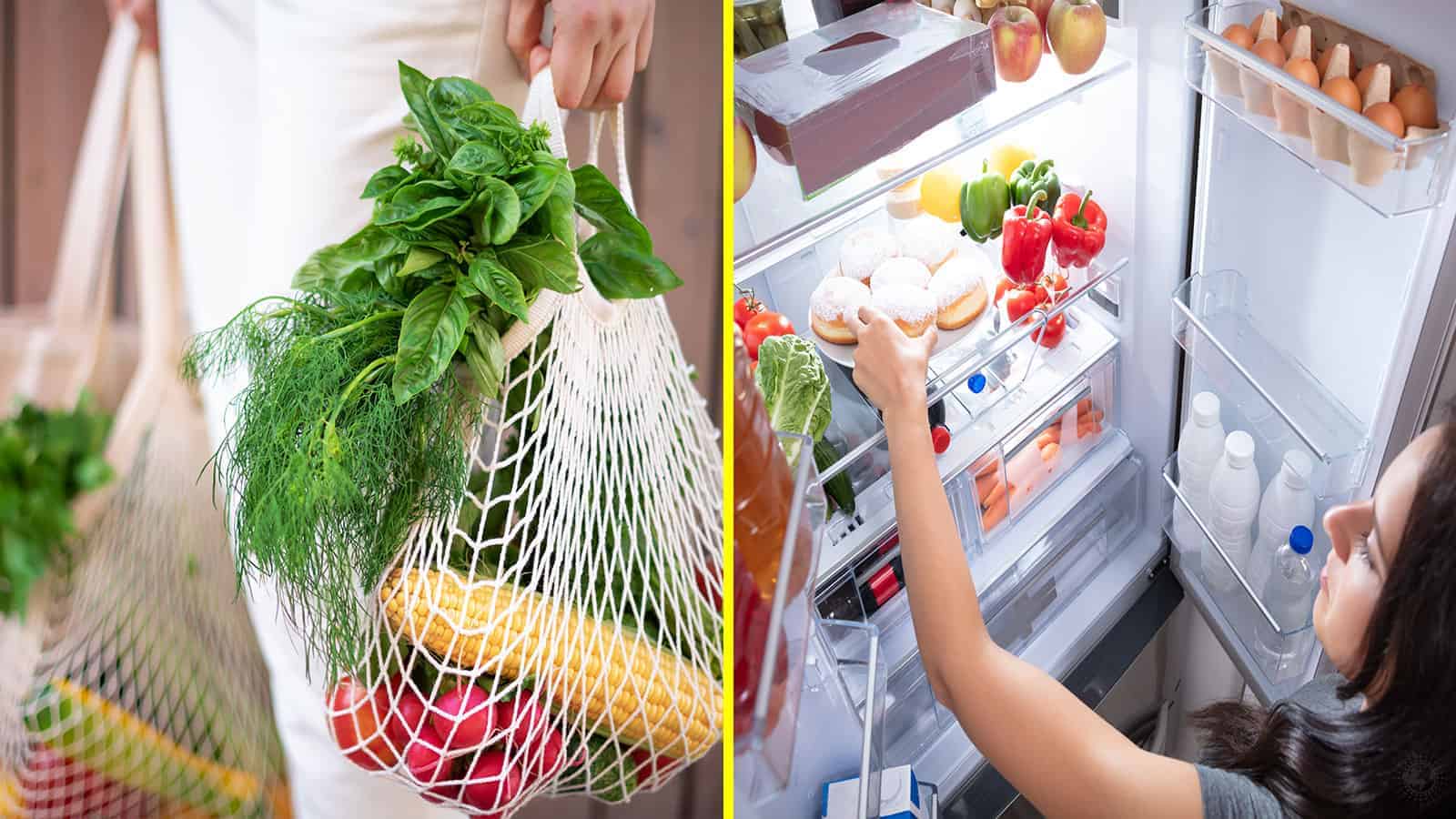When you think about the global warming issues that plague the world, it’s difficult to not be discouraged. Climate change is happening on such a huge scale, and a lot of the main contributing factors feel very out of the hands of the ordinary citizen. However, your daily habits can make a significant contribution.
But is that really true? You may be pleased to know that you can actually help to reduce global warming all on your own. You see, each person has a carbon footprint, produces waste, consumes energy, and purchases goods. In all these areas, you can take more sustainable actions.
So, what can you do? You have many different options, but there are a few daily habits that are especially easy to incorporate into your busy life.
Here Are 5 Daily Habits That Reduce Global Warming
1. Control Your Energy Usage
Many of us use energy without mindful thinking. You might not even realize the extent of your energy consumption. Luckily, it’s not too difficult to manage your overall consumption to a reasonable level. Here’s how you can do that:
· Read Appliance Labels
The labels of your appliances will give you a good idea of how much energy they use. Try to go for ones that are actively more sustainable than others.
· Choose The Right Light
We all need to use electric lights sometimes. But what you should do is make sure that you choose the right ones. LED lights are great recyclable options, and they come in a large range of colors. There are also plenty of energy-saving lamp options.
· Don’t Use Standby Mode
Standby mode is a very convenient way to keep your appliances ready to go in an instant. But that still takes up energy. Just having the TV’s standby light on, leaving a charger plugged in and switched on, or keeping the main switch of your microwave ready can eat up a lot of energy. Make it a habit to turn things off directly when you’re done using them.
· Put A Lid On
When you cook, put the lid on your pots or pans. This allows the contents to cook more quickly thanks to the trapped steam, saving energy. (On that note, make sure you close your fridge whenever you’re not using it!)
· Use Renewable Energy
Plenty of renewable energy options are now available in this modern time. If you have the means to afford such an investment, then go through with it! Install solar panels and use them for energy. You’ll save on electricity costs while reducing global warming.
· Keep It Warm, Not Hot
We all love a good, comfortable, toasty atmosphere in the colder months. But a lot of heat can wrack up your electricity bill and make your carbon footprint that much more severe. Stick to keeping it warm, not hot. Just one or two degrees less could reduce carbonic acid gas release by 200 kg and save up to 10% of your energy consumption.
The same goes for air conditioning, of course. Keep it cool, not as cold as it can get! In addition, you may hire a dependable contractor to service your ac unit and maintain it’s energy efficiency. If you need a professional ac service in Delray Beach, FL, there are local hvac companies you can depend on. According to a ac repair corona company, your ac unit’s operational lifespan may even get extended if it gets regular maintenance services.
· Be Wise
Some energy-saving tips are fairly obvious. Just be smart about it! Turn off lights and fans when you leave a room. When you’re done listening to music or watching a show, turn off the related electronic. It’s as simple as that to make a positive change!
2. Learn To Recycle
As a rule, everyone should learn to recycle. That’s a crucial skill. You could probably find programs or educational classes about the basics of recycling in your area, and if not, there are lots of resources to do so online. Here are some tips for recycling to reduce global warming:
· Reduce
Start by reducing the number of things you use on a daily basis. Find ways to keep your consumption to a minimum.
· Reuse
Try to reuse as many items as is healthily possible at home. Slowly phase out single-use items from your daily life. When you do need to buy new things, try dropping by second-hand markets, thrift stores, and other similar places. It saves money and the planet at the same time!
· Recycle
Try to only use recyclable materials. Things made from paper, glass, plastic, and metal are fantastic options as they can be recycled most of the time, costing far less energy to manufacture new products from them.
· Up-cycle
Thought there were only three steps in reduce, reuse, and recycle? Well, there are, but up-cycling is an excellent candidate for the fourth. Take your waste items and, instead of throwing them out, turn them into something more useful. You can make art from fragments of certain materials, make pots or item holders, and more!
3. Change How You Travel to Decrease Global Warming
Travel is essential for you to get from point A to point B, but there are more positive ways that you can get around. Chances are, your current travel arrangements are adding a significant contribution to global warming. Here’s what you can change:
· Reduce Car Travel
Motor vehicles reduce countless harmful emissions into the air which leads to air pollution, climate change, and the exacerbation of health problems. This includes an increased risk of complications from heart disease, lung cancer, respiratory infection, stroke, COPD, and asthma.
If your car uses a combustion engine, diesel fuel, or anything similar, you should work on cutting down car travel time.
· Carpool
Carpooling or ride-sharing is a good way to still use common vehicles to get to farther places. It’s not exactly environmentally friendly, but one car is much better than four or five of them – especially if you’re all going to the same place.
So rope your colleagues, schoolmates, friends, or other people heading in the same direction into your environmental efforts!
· Use Public Transportation
Public transportation runs daily and riding this instead of taking your own vehicle can help you get to faraway places quickly without the emissions of your car affecting the world.
· Reduce Air Travel
Air travel burns through huge amounts of fuel and results in the production of high volumes of carbon dioxide. The resulting vapor trails and a wide range of other high-altitude issues can be horrible for the ozone layer, and one plane ride can add the equivalent of a year of driving a car in the carbon footprint.
· Walk or Ride A Bicycle
These are great ways to get some extra exercise. You and the planet will both benefit. As long as you don’t need to travel too far away and will be in a safe area, these are viable options.
4. Stop Using Single-Use Plastics
Single-use plastic production is one of the main reasons behind production-based waste. Here are some 2010 statistics about single-use plastics that do not reflect in a positive way about the state of the world’s plastic pollution. These statistics all occur on an annual basis:
- Approximately 275 million tons of plastic waste is produced globally
- 9 million tons of plastic waste is very poorly managed, causing them to leak into the oceans
- 5 million tons of plastic waste gets into the oceans from coastline areas
- Approximately 270 million tons of plastic are produced per year – plastics virtually never degrade and can never be destroyed
- There are between 10,000 and 100,000 tons of plastic in the ocean
So, how can you reduce plastic waste? It’s a good idea to start phasing out all plastic from your life in the things you buy. Of course, we’re not expecting perfection. After all, plastic is cheap, durable, and accessible, and virtually everything is made from it in some way. But work on slowly buying more sustainable products instead! With some positive thinking, you can break away from the daily habit of using plastics..
In the meantime, though, work on phasing out single-use plastics specifically from your life. Here are some things to avoid buying or using:
- Food wrapped in plastic wrap
- Plastic water bottles
- Plastic bags (don’t use paper bags, either; opt for reusable canvas, bamboo, or cloth bags!)
- Anything in a plastic wrapper or package
5. Change How You Eat
Diet changes are difficult to make, but doing so can be a big positive step in your personal journey towards a more sustainable lifestyle overall as well as increase healthy daily habits. Here are some changes that you can make:
· Red Meat
The production of red meat – through the raising, breeding, and harsh treatment of lambs, cows, and other livestock – has especially negative effects on the environment.
It can be hard for meat-lovers to give up these foods, but with positive thinking, it can be done. Opt for protein that comes from plants (like nuts) or use white meats instead!
· Shop Locally At A Farmer’s Market
A farmer’s market is full of healthily produced produce from local farmers. As such, they don’t go through the difficult and often problematic production processes of factory farms or large-scale production plants.
In addition, buying local produce means you’re not eating products that had to be flown or shipped to you over long distances. This reduces your carbon footprint and contributes less to the emissions caused by those shipments.
· Go Vegetarian
If you eat a vegetarian diet, you’ll be contributing a mere half of the usual CO2 emissions that a “normal” diet would produce.
· Go Vegan
If you’re very committed to reducing global warming and have the positive thinking needed for this big diet change, you can go vegan. Reducing dairy and meat intake is a huge step forward in doing your part to reduce global warming.
· Reduce Food Waste
Don’t waste food. Cook and take only what you need. Instead of tossing out leftovers, consider composting. Don’t buy food in plastic or non-recyclable plastic when you can.
 Final Thoughts: It’s Easy to Adopt New Daily Habits That Reduce Global Warming
Final Thoughts: It’s Easy to Adopt New Daily Habits That Reduce Global Warming
It can certainly be upsetting to think about the quick advancement of climate change, but all is not lost. Your one actions may be small, but they still contribute to the world’s efforts, and if even just a fraction of the people on the planet make these changes, there can be hope yet.
Having difficulty adding these global warming reduction methods to your everyday schedule? Don’t worry! These kinds of changes can be pretty tough to make, especially all at once. It’s a learning process, so don’t be too hard on yourself if you slip up now and then.
Just slowly get better and better at implementing these daily habits, and before you know it, you’ll be living an environmentally friendly and sustainable life! And, you will be helping to slow down global warming.


















